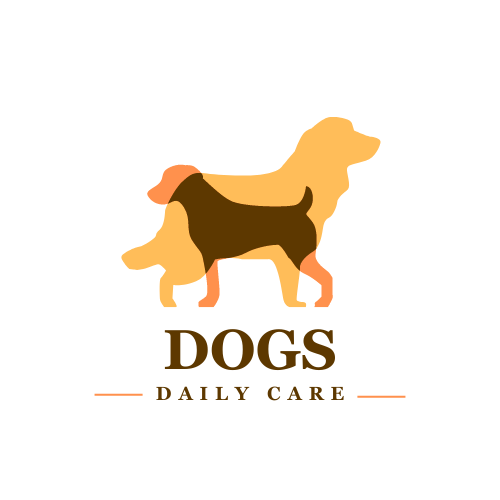How Much Should a Beagle Eat a Day? – A Complete Guide
Wondering how much your furry Beagle friend should be eating every day? You’re not alone. Feeding your Beagle the right amount is more than just filling up the bowl and hoping for the best. It’s about providing balanced nutrition that suits their age, weight, and activity level, all of which are crucial for their overall well-being.
Understanding how much to feed your Beagle can feel like navigating a maze. Overfeeding can lead to obesity and related health issues, while underfeeding could result in malnutrition. That’s why we’ve created this comprehensive Beagle feeding guide to take the guesswork out of mealtime.
In this article, we’ll delve into the factors that should influence your Beagle’s diet, including their age, weight, and how active they are. We’ll also answer some frequently asked questions and offer practical tips for choosing the right type of food for your beloved pet. So grab a cup of coffee, get cozy, and let’s make sure your Beagle is getting the nutrition they truly deserve!
Why Your Beagle’s Diet Matters
Beagles are known for their keen sense of smell and insatiable appetite. This makes them adventurous eaters who will gladly munch on almost anything you put in front of them. While this enthusiasm can be endearing, it also makes it incredibly important to carefully manage your Beagle’s diet. A balanced diet is more than just a full belly; it’s the cornerstone of your Beagle’s overall health and happiness.
Nutrition plays a vital role in every aspect of your Beagle’s well-being, from their shiny coat and bright eyes to their energy levels and even their lifespan. Feeding your Beagle the wrong foods, or simply too much of it, can lead to a host of health issues like obesity, diabetes, and heart conditions. On the flip side, inadequate nutrition can result in poor growth, weakened immune system, and a lack of vitality. In essence, the stakes are high when it comes to your Beagle’s diet.
So, how much should a Beagle eat to maintain optimal health? The answer isn’t as straightforward as you might think. Factors such as age, weight, and activity level all come into play, making each Beagle’s dietary needs unique. That’s why we’ve created this all-encompassing guide to help you navigate the ins and outs of Beagle nutrition, ensuring your four-legged friend enjoys a long, healthy life.
Factors Influencing a Beagle’s Diet
You may think a scoop of kibble is just a scoop of kibble, but when it comes to feeding your Beagle, various factors come into play. Understanding these can make a world of difference in your Beagle’s health and well-being. In this section, we’ll explore the primary influences on a Beagle’s diet, breaking it down by age, weight, and activity level to help you make more informed decisions at mealtime.
Age
Beagles, like humans, have different nutritional needs at various stages of life. Puppies are growing rapidly and require more protein and calories to support their development. Adult Beagles, on the other hand, may need fewer calories but more fiber and nutrients to maintain good health. Senior Beagles often require specialized diets to manage age-related issues like arthritis or reduced activity levels. It’s important to adjust your Beagle’s diet as they age to keep them in peak condition.
Weight
Whether your Beagle is underweight, at an ideal weight, or carrying a few extra pounds, their weight significantly influences their dietary needs. Underweight Beagles may require calorie-dense foods to help them gain weight safely, while overweight Beagles might benefit from a diet lower in calories but rich in nutrients. Monitoring your Beagle’s weight and adjusting their diet accordingly is essential for long-term health.
Activity Level
Activity level is another major factor that affects how much your Beagle should eat. A Beagle who spends most of the day snoozing on the couch will have different calorie requirements from one who is regularly active, going for long walks or playing fetch. Keep an eye on how active your Beagle is and consult your vet for personalized advice tailored to their lifestyle.
General Feeding Guidelines for Beagles
Now that we’ve explored the factors that influence your Beagle’s diet, let’s dive into some general feeding guidelines. These tips can act as a baseline, helping you understand how much food your Beagle needs to thrive. Remember, each dog is unique, so these are starting points that may require customization based on your Beagle’s specific needs.
Portion Sizes and Frequency for Different Life Stages
Puppy Beagles

For the first three months, Beagle puppies usually require four meals a day. They need calorie-dense, high-protein kibble to support their rapid growth. After three months, you can reduce this to three meals a day.
Adult Beagles

Adult Beagles typically do well with two meals a day. The portion size will depend on their weight and activity level but aim for a balanced diet that includes protein, carbohydrates, and healthy fats.
Senior Beagles

As your Beagle ages, their metabolism may slow down. Two smaller meals a day or one larger meal can suffice, depending on your vet’s recommendation. Make sure to include nutrients that support joint health and cognitive function.
When and How to Make Feeding Adjustments
Life is dynamic, and so is your Beagle! You might need to adjust their diet due to lifestyle changes, health conditions, or weight fluctuations. Keep an eye on their weight and consult your vet if you notice any sudden changes. The type of food, portion sizes, and feeding frequency can all be tweaked to keep your Beagle in top shape.
Whether you’re a new Beagle parent or a seasoned pro, understanding the general feeding guidelines can help you make informed decisions. Combined with the factors of age, weight, and activity level, you’re now equipped to provide the best nutritional care for your furry friend.
Type of Food
Feeding your Beagle a balanced diet involves more than just the amount; it’s also about the type of food you choose. With a variety of options available, selecting the right food can be overwhelming. Whether you opt for dry kibble, wet food, homemade meals, or a raw diet, each comes with its own set of pros and cons. Let’s delve into the details to help you make an informed choice for your Beagle’s nutritional needs.
Dry Kibble
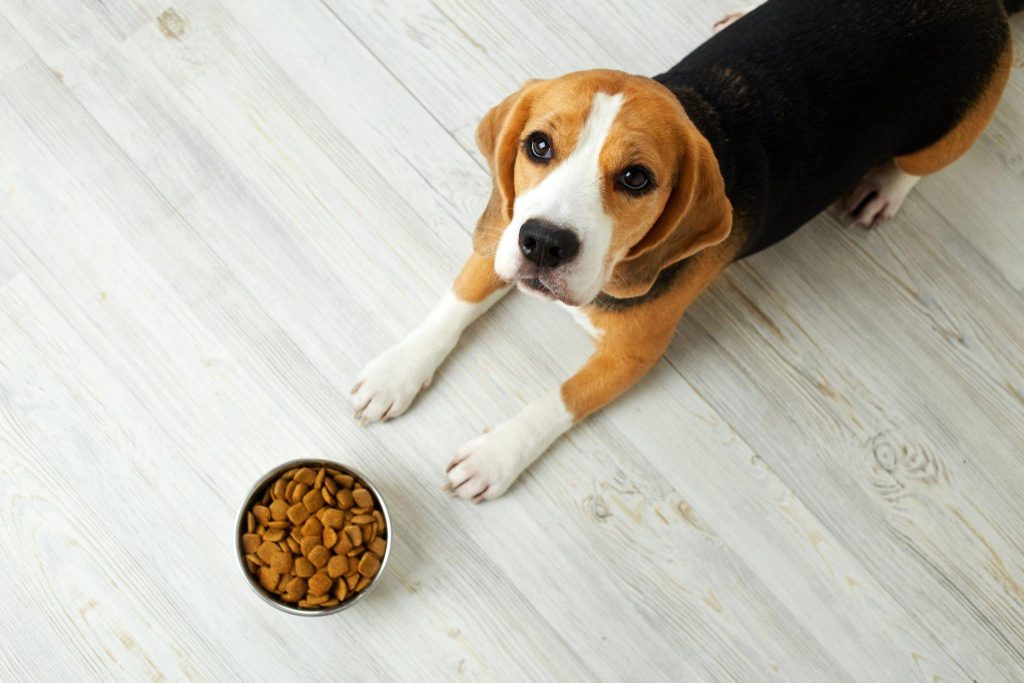
Pros: Dry kibble is convenient, cost-effective, and has a long shelf life. It’s also beneficial for dental health as it helps to scrape off plaque from your Beagle’s teeth.
Cons: Some dry foods can contain fillers or low-quality ingredients. Always check the label for high-quality protein as the first ingredient.
Examples: Brands like Blue Buffalo, Hill’s Science Diet, and Nutro offer high-quality kibble options for Beagles.
Wet Food

Pros: Wet food is highly palatable and easier to chew, making it an excellent option for puppies, seniors, or Beagles with dental issues. It also helps with hydration.
Cons: Wet food is generally more expensive and has a shorter shelf life once opened. It can also contribute to dental problems if not balanced with some dry food.
Examples: Canned options from Merrick, Wellness, and Royal Canin are popular choices for those who prefer wet food.
Homemade Meals
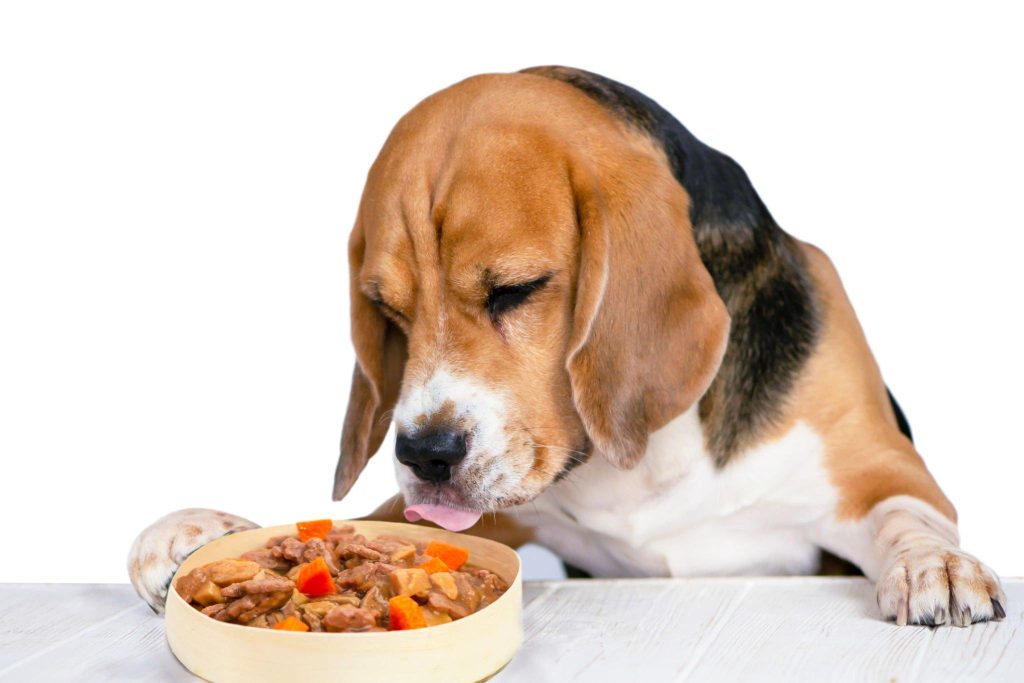
Pros: Preparing homemade meals for your Beagle allows you complete control over the ingredients, making it easier to avoid allergens or fillers.
Cons: Homemade diets can be time-consuming and may lack essential nutrients if not well-researched. Consult your vet for a balanced recipe.
Examples: Simple homemade recipes can include cooked chicken, rice, and steamed vegetables, but remember to consult your vet for specific nutritional guidelines.
Raw Diet
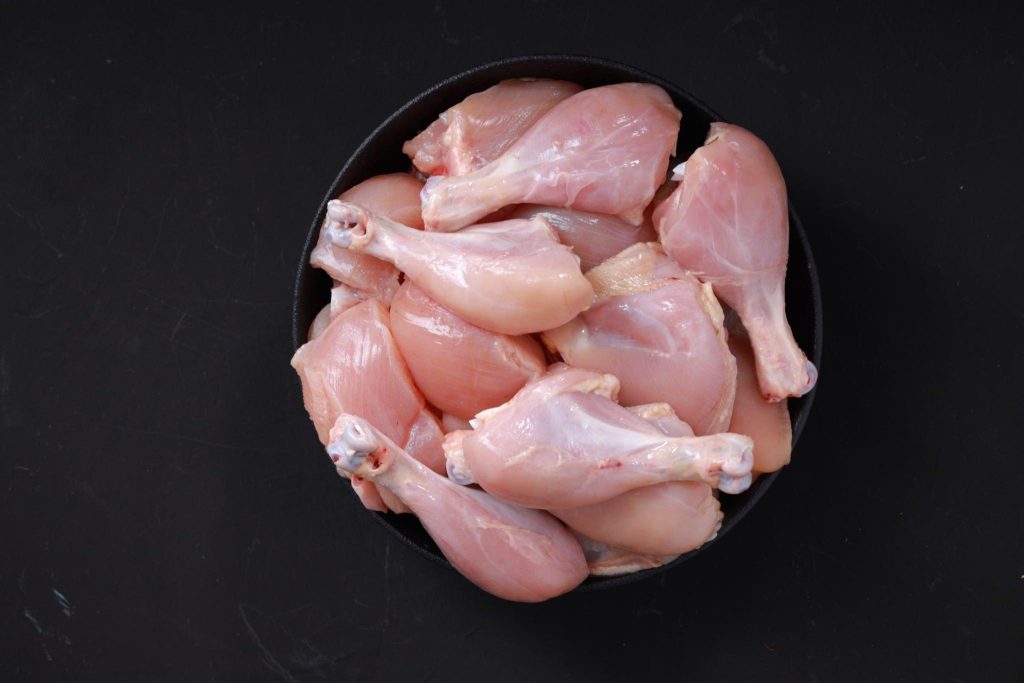
Pros: Advocates of raw diets claim they are more natural and can lead to a shinier coat and healthier skin.
Cons: Raw diets come with a risk of bacterial contamination and are not universally recommended by veterinarians. They can also be more expensive and time-consuming to prepare.
Examples: Raw diet menus might feature raw beef, chicken, or fish, along with fruits and vegetables like apples and carrots. Always research and consult your vet before switching to a raw diet.
Whether you’re a first-time Beagle owner or a longtime enthusiast, understanding the types of food available can help you tailor a diet that fits your dog’s specific needs. Always consult your vet before making significant changes to your Beagle’s diet to ensure it meets all their nutritional requirements.
How Many Calories Should a Beagle Eat in a Day?
Calories aren’t just a concern for humans; they matter for our furry friends too! Determining the right caloric intake for your Beagle can significantly impact their health, energy levels, and even lifespan. So, how many calories should a Beagle eat in a day? The answer can vary depending on several factors such as age, weight, and activity level. Let’s dive into the specifics, breaking it down by the type of food as well.
Dry Kibble
- Caloric Range: A standard cup of dry kibble usually ranges between 300 to 400 calories.
- Daily Requirement: For adult Beagles, 1 to 1.5 cups can suffice, equating to about 300 to 600 calories per day, depending on their activity level.
Wet Food
- Caloric Range: Wet food is generally denser in calories, with a standard can containing anywhere from 350 to 450 calories.
- Daily Requirement: Half to one can per day should be adequate, leading to an intake of around 175 to 450 calories, again varying based on activity.
Homemade Meals
- Caloric Range: This can widely vary but assume around 250 to 300 calories per cup of a well-balanced homemade meal.
- Daily Requirement: 1 to 1.5 cups a day would make about 250 to 450 calories, tailored to the specific needs of your Beagle.
Raw Diet
- Caloric Range: Raw diets can vary significantly but expect around 300 to 400 calories per cup.
- Daily Requirement: Similar to kibble, 1 to 1.5 cups could be adequate, translating to 300 to 600 calories per day.
Special Cases
- Puppies: Beagle puppies are growing and need extra calories, so they may require up to 800 calories per day.
- Seniors: Older Beagles are generally less active and may require fewer calories, around 400 to 500 per day.
Remember, these are just general guidelines, and individual needs can vary. Consult your veterinarian to get an exact figure tailored to your Beagle’s unique requirements. Adjust the caloric intake based on weight changes and activity levels, and keep an eye out for signs of proper or improper feeding as outlined earlier in this guide.
Signs You’re Feeding Your Beagle Correctly (Or Incorrectly)
So you’ve got your Beagle’s diet all mapped out, but how can you be sure it’s working? Like humans, dogs give off signs that indicate whether their nutritional needs are being met. Knowing what to look for can help you adjust your Beagle’s diet accordingly and steer clear of potential health issues. Below, we’ll break down some of the signs that you’re on the right track, as well as red flags that may indicate a need for change.
Signs of a Well-Fed Beagle
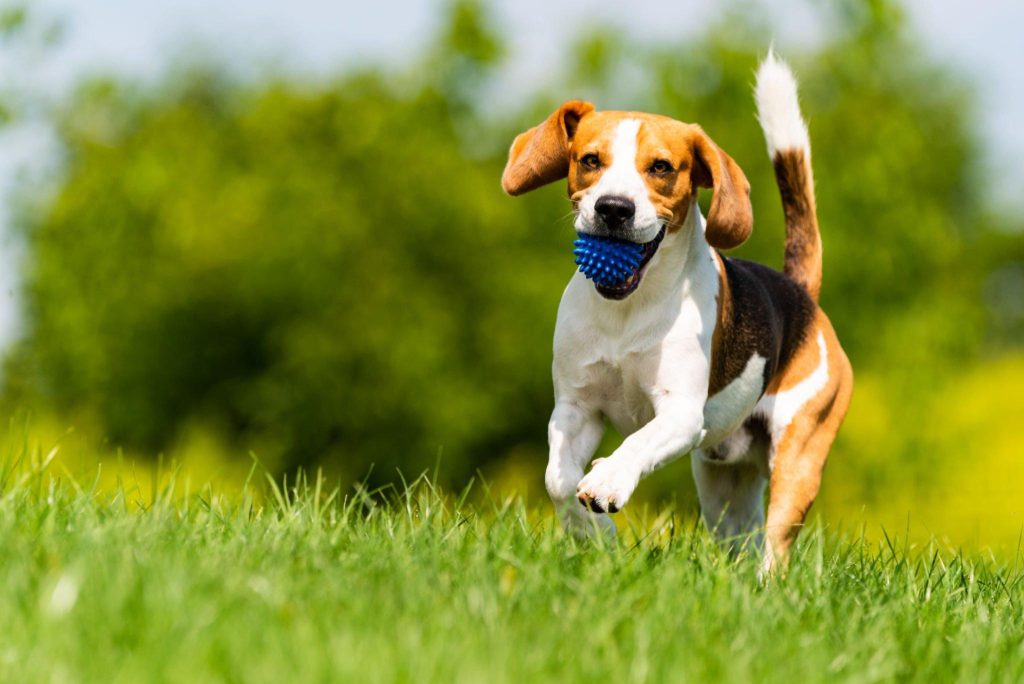
- Healthy Coat: A shiny, thick coat is usually a good indicator that your Beagle is getting the nutrients they need.
- High Energy Levels: A well-fed Beagle will have the energy for walks, playtime, and other activities.
- Good Weight: Your Beagle should maintain a steady, healthy weight, neither too skinny nor overweight.
- Regular, Healthy Bowel Movements: Consistent and well-formed stools indicate a well-balanced diet.
Signs of an Improperly Fed Beagle
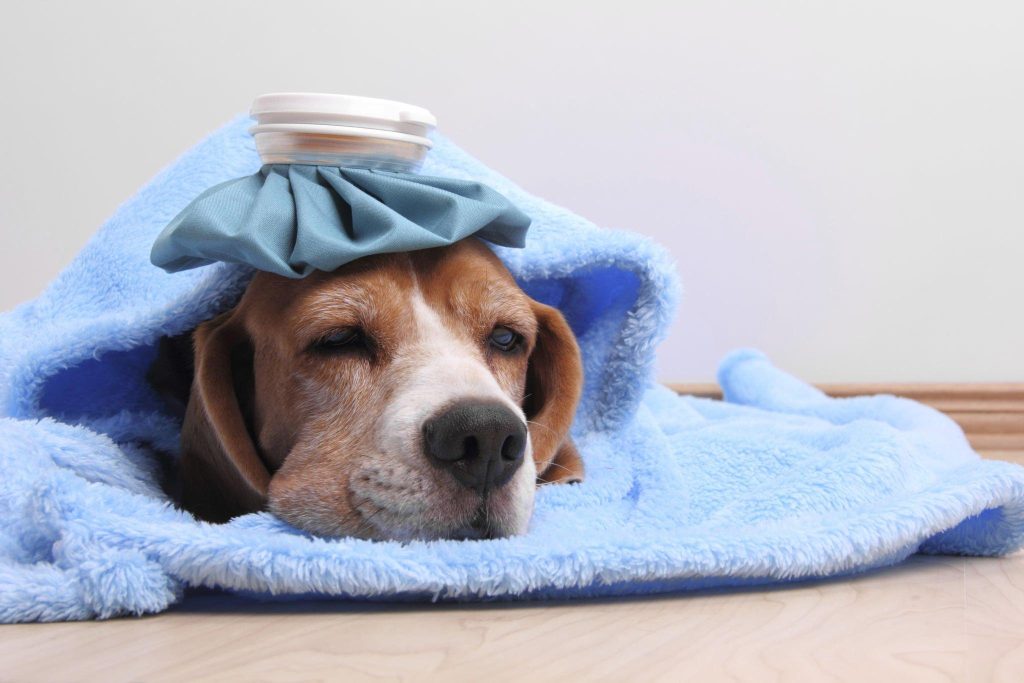
- Lethargy: Low energy levels could be a sign that your Beagle is either underfed or not getting the right nutrients.
- Dull, Flaky Coat: A lackluster or flaky coat can indicate a deficiency in essential fatty acids or other nutrients.
- Weight Fluctuations: Rapid weight gain or loss is a cause for concern and should prompt a visit to the vet.
- Irregular Bowel Movements: Diarrhea or constipation can indicate digestive issues possibly tied to diet.
If you notice any of these red flags, it’s crucial to consult your vet for a thorough check-up and dietary advice tailored to your Beagle’s unique needs. Feeding your Beagle correctly isn’t just about the quantity or type of food; it’s about keen observation and timely adjustments to ensure they’re leading a happy, healthy life.
Frequently Asked Questions
As you navigate the intricacies of feeding your Beagle, you may find yourself with a few questions. Not to worry; you’re not alone. Here are some of the most frequently asked questions about Beagle diets, along with straightforward answers to guide you.
1. How many times a day should I feed my Beagle?
Feeding frequency depends on your Beagle’s age. Puppies usually need four meals a day, while adults do well with two. Senior Beagles may require fewer meals but should still consume nutrient-dense foods.
2. Can I feed my Beagle human food?
While it may be tempting to share your meal with your furry friend, many human foods are unhealthy or even toxic to Beagles. Stick to dog-safe treats and consult your vet for advice on occasional human foods that can be included.
3. Is it okay to switch dog food brands?
If you’re considering a change, it’s crucial to transition your Beagle slowly to avoid digestive issues. Mix the new food with the old in increasing proportions over a week.
4. How can I tell if my Beagle is overweight?
Signs of an overweight Beagle include difficulty in feeling their ribs, reduced energy, and labored breathing. Consult your vet for an accurate diagnosis and a weight management plan.
5. Do Beagles have specific dietary needs?
While Beagles don’t have breed-specific dietary needs, their high energy levels and propensity for weight gain mean they benefit from a balanced diet that’s rich in protein and low in fats and fillers.
6. Should I consult a vet before making significant dietary changes?
Absolutely. A vet will consider your Beagle’s age, health conditions, and activity levels before recommending any significant changes to their diet.
Navigating the nutritional maze for your Beagle doesn’t have to be daunting. We hope these FAQs have answered some of your pressing questions and set you on the path to making more informed feeding decisions.
Conclusion
Congratulations on reaching the end of this comprehensive guide on how much a Beagle should eat in a day! Your journey towards ensuring your Beagle’s health and happiness starts with their diet, and you’re now well-equipped to make informed decisions. From understanding the importance of a balanced diet to recognizing the signs of proper (or improper) feeding, you’ve covered significant ground.
Feeding your Beagle isn’t a one-size-fits-all proposition. Whether it’s dry kibble, wet food, homemade meals, or a raw diet, you’ve seen that each comes with its pros and cons. Monitoring your Beagle’s weight, coat condition, and energy levels will help you fine-tune their dietary plan. Remember, if you encounter any red flags or uncertainties, it’s always best to consult your vet for personalized advice.
If you’ve found this guide helpful, please consider sharing it with fellow Beagle owners. Your Beagle’s nutritional journey is an ongoing process, but with attention to detail and a little expert guidance, you’re on the right track to ensuring they live a happy, healthy life.
